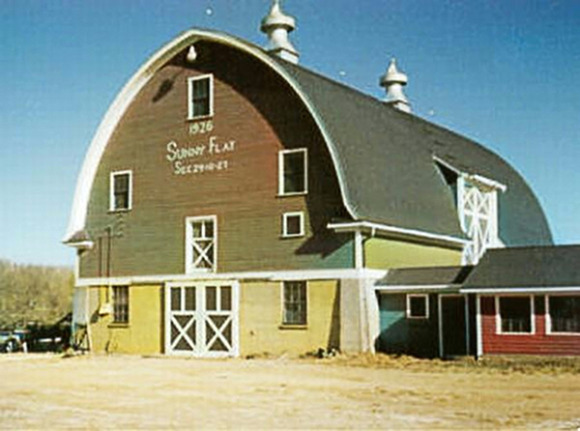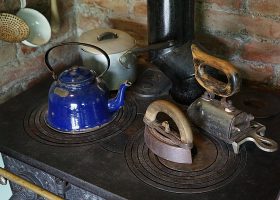By Elva Paton – Moose Jaw, Sask.
The 1910s and early ‘20s had good crop conditions. Dad thought he was in good enough financial shape to build some new buildings. He’d always said that a good barn should come first. He’d often remarked that if a good big house came first, they never got around to having a good barn.
He studied building books carefully and chose one that he liked and that he believed would last a long time. It had concrete walls for the first story and an attached chicken house. He got in touch with a contractor in 1926 who’d built several of the big barns and houses in the surrounding Cardross and Mitchellton areas. That summer, our yard was a construction scene. I was eight at the time.
One of the first steps was bringing in boulders and having the crew split them up into smaller, rougher pieces to go into the concrete floor. I wondered why they had to do that rather than just using smaller rocks picked up from the field.
Us kids watched with interest at everything that went on and were always anxious about the men working on the roof. We thought it was easy to fall from there, but no one ever did.
One day my younger brother, Wilbert, and I saw a carpenter working on something about halfway between the house and the barn. He was pounding nail after nail into something.
Nails flattened to ‘clinch’
We asked him what he was making that was taking so many nails and he said it was a door to fit into a small opening just above the main doors on ground level.Turning it over, we could see all the nails that had come through to the back. He said he was going to knock them all down flat and ‘clinch’ them, as it’s called.
Just then, he was called for dinner and said he would clinch them afterwards. When he was gone, my brother and I decided to knock them all down for him and save him a lot of time. We found a couple of hammers and started knocking them down, not caring which direction they went. We thought he’d be pleased, but when he came back he was furious.
He said, “You’re supposed to pound them all in the same direction! Now I’ve got to straighten them and do it over. Go get your dinners and when you come back I’ll show you how they should look.” When we got back, there they were, all laid down in one direction. It was a pretty sight.
I often wondered why that opening was there, because I only ever saw it used once. It was when our piano was raised by ropes and pulleys into the loft. It was going to provide music for the barn dance to follow the night after the barn was finished.
That was a very tense moment. One of the ropes began to stretch and everybody was afraid the piano would be lost. But someone hollered, “Whoa!” and the rope stopped stretching. Then, the piano sailed up and went into the loft.
Fast and frenzied playing
It stayed there until an earthen driveway ramp to the big loft doors on the east side was in place. The piano left the loft in a wagon. The only memory I have of the dance is of Chrissy Mitchell and me dancing a Russian Polka being played fast and frenzied by Mrs. Mergel, her hands flying over the keyboard.
The mighty barn, built by William (Bill) Suehwold, stands on the S.W. quarter of Section 29, Township 10, Range 27, W. of the 2nd Meridian. (Approximate location)
It has endured for 86 years now and has become a landmark seen from the grid road that runs east and west on the south side of this property. The barn has been kept up and looks as good as it did in the beginning.




